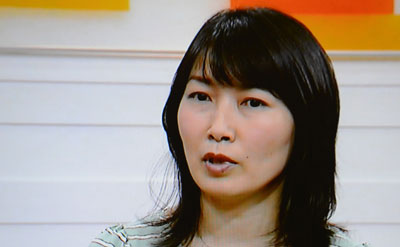My colleagues and I were saddened to learn of the death of Mika Yamamoto, a Japan Press video and photo journalist who was killed while covering clashes in Aleppo, Syria, on Monday. The moment was all the more poignant because of the similarities with two other Japanese journalist fatalities: Kenji Nagai of APF News in Burma in 2007 and Hiro Muramoto of Reuters in Thailand in 2010. As with Yamamoto, Nagai and Muramoto were photojournalists covering conflict between anti-government elements and government troops in foreign countries.
And as in the Yamamoto case, shocking video footage of the Nagai’s death by gunfire spread online even before the details could be confirmed through official channels. That footage documented a soldier targeting Nagai at point-blank range, contradicting Burma’s assertion that he was killed by a stray bullet as troops quelled monk-led anti-government protests. The moment was immortalized in the compelling documentary, Burma VJ, which captures the scene from the perspective of the underground Burmese video journalists recording it on handheld devices. “Who did they shoot?” one asks. The response is chilling: “A guy with a camera.”
Investigating Muramoto’s death, CPJ found that both troops and protesters–led by the red-shirted, anti-government United Front for Democracy Against Dictatorship–behaved recklessly and heightened the risks for journalists covering the conflict. Preliminary government findings indicated that the bullets that killed Muramoto came from the direction of security forces. But officials didn’t follow up, instead concluding that government forces were not the source of fire. Doubting their sincerity, CPJ called for an independent inquiry, which never materialized.
Initial video footage of Mika Yamamoto’s body, reviewed by The Associated Press, suggests that she was traveling with the rebel Free Syrian Army when troops fighting for President Bashar al-Assad’s regime opened fire. Many details about the circumstances of her death remain uncertain–and we hope Japan will press for clarity.
Yamamoto’s death has sparked enormous concern among Japanese colleagues and the public. As Japan continues to expand its global media reach, journalist security is increasingly in the spotlight. Just last month, the Asahi Shimbun newspaper reported that police in China’s Nantong kicked its correspondent Atsushi Okudera in the head and confiscated his camera and press ID to obstruct his reporting on environmental protests.
In 2010, CPJ Executive Director Joel Simon wrote an op-ed for the Asahi Shimbun, which was published in translation on our website. “Japan’s economic future is linked to global events, from oil production in Nigeria to trade liberalization in Vietnam. Journalists covering news in these countries face violence and persecution,” Simon wrote. He made the case that Japan, by protecting its own reporters overseas and their colleagues around the world, is in a powerful position to expand its press freedom influence, as well as its coverage: “Standing up for journalists around the world is a way for the Japanese media to expand its global influence and prestige while reaffirming its commitment to the highest ideals of the journalistic profession.”
Two years later, that message seems more vital than ever.
